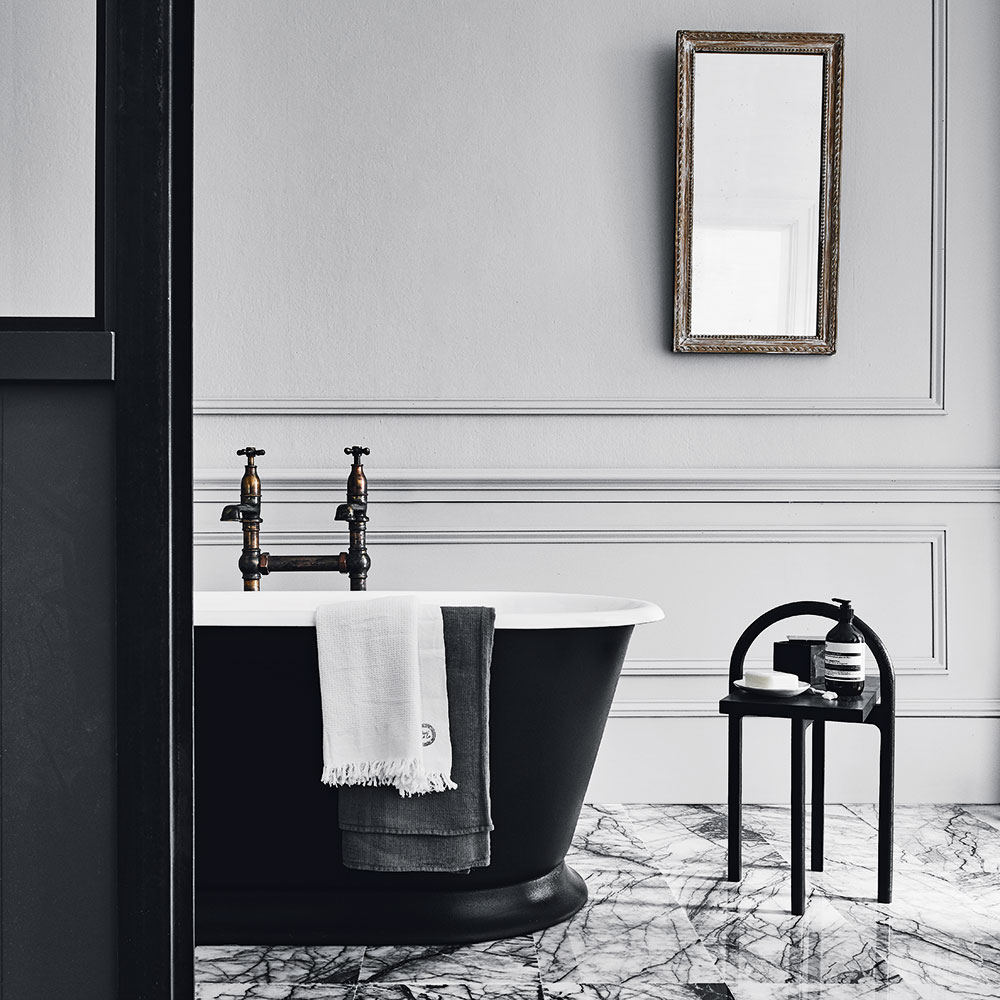How to buy a bathtub
The definitive guide to choosing the perfect bathtub for your home


Whether ritualistic, religious or curative, bathing has always been about more than just personal hygiene, and the modern bathroom is no exception. Not just a functional space, it's a haven to retreat to after a hard day, somewhere to relax mind and body.
The bath is the focal point, so it makes sense to choose one that's beautiful as well as useful. But with hundreds of shapes, styles and materials available, where do you start? Don't get into a lather - we've found the hottest tubs to suit every budget.
Before you buy a bath
‘Never buy a bath on a whim,' warns Jonathan Carter, marketing manager at Victoria & Albert. ‘To ensure you're happy with your investment, reserve time for choosing the right one.' The first things to consider are space and budget, and how much of each you have. As a general rule, a freestanding bath will take up more inches and more pennies than a built-in number.
Combined bath and shower
Think about who will be using your new bath and in which way. 'Showers are seen as a bathroom essential, but you may still want a bath for those chill-out moments or for small children,' says Mike Wilson, marketing manager at Kohler. ‘So if space is tight, you may need to combine showering and bathing in one functional space.' If this is the case, consider a P-shaped bath, which has a curved shower screen and a larger, anti-slip end for showering in.
Separate bath and shower
If you have a separate shower, you may not use your bath every day, which means you can indulge in something a little less functional. Think about whether you like to sit up, or prefer to lie down and soak. Do you have children who will use the bath? Do you want an extra-deep tub? Or maybe you'd like room for two? In which case you might want to opt for a double-ended bath where no one has to sit on the plug or in front of the tap.
Test it out
‘A bath is a big investment,' says Jonathan Carter. ‘Choosing what's best is a very personal thing. A metre-deep Japanese tub with dead straight sides is a totally different bathing experience to a low-slung, contemporary bath where you're nearly lying horizontal. The British can be reserved about trying things out, but you wouldn't buy a bed or a car without testing it first, so don't be shy - get in and see how it feels.'
Sign up to our newsletter for style inspiration, real homes, project and garden advice and shopping know-how
Freestanding baths
The fashion for freestanding baths is one that just keeps on going, and there is no shortage of products to choose from. A freestanding bath can be a real focal point and also gives a room an incredibly indulgent feel.
- Think about what sort of look you want: some people prefer period authenticity, complete with claw feet and a rolled rim, while others like a more contemporary design. Now there's a move away from square designs towards curvy, organic shapes that are easier to relax in.
- ‘Some modern baths can be very angular but, while they're great to look at, they aren't always comfortable to sit in,' says Hayley Tarrington, senior designer at CP Hart.
- Trendwise, single-piece, solid-surface baths that are space-efficient and sculptural are becoming more popular. ‘Bath shapes used to be restricted by the materials they were made from, but modern products such as Corian, LG Hi-Macs (acrylic) and Cristalplant (mineral composite) mean almost anything is possible,' says Hayley Tarrington
Bath design
There are many ways to give a run-of-the-mill inset bath a luxe look. Forget wobbly acrylic panels - encase your bath in sexy tiles, glossy mirror or even coloured glass, which can be illuminated with bathroom-friendly LEDs for added ambience. ‘If your budget's limited,
position an inset bath in the middle of the room and clad it entirely in a beautiful material,' says Hayley Tarrington, senior designer at CP Hart. ‘This can create a freestanding look for a fraction of the cost.'
Stylish cladding
Cladding is the eye-catching element of an inset bath, so choose carefully. A classic stone, such as marble, is smart, or why not use a striking wood? ‘Panelling in warm, exotic woods looks great and tones with most bathroom furniture,' says Gary Dart, managing director at Duravit. ‘Choose from cherry, rosewood, ebony, bleached oak, wenge, ash, olive, American walnut or maple.'
‘Wedi board is a waterproof panelling system that's perfect for bath cladding - and you can tile directly onto it,' says Matt Watson, marketing manger at Kaldewei
'Mosaics are also a great option as you can make them go around corners.' Whatever cladding you choose, remember to enable access to the plumbing in case anything springs a leak.
Shape sorting
Aside from rectangular baths, there's a host of shapes - from ovals to hexagons to squares - that might suit your space better. ‘Whatever shapeor size you choose, a bath will take up a fair proportion of the room,' says Mike Wilson, marketing manager at Kohler, ‘so it's a good idea to go to a retailer who can design a complete space. They may be able to do something clever that will ultimately save you money.'
Material choices
‘Everyone wants a bath to last a long time and do a good job,' says Jonathan Carter, marketing manager at Victoria & Albert, ‘so the material you choose can be crucial.'
- Old-fashioned, poor-quality acrylic inset baths tend to be less rigid and may rely on chipboard supports. Avoid these and opt for a more robust material - modern acrylics are much better quality and actually hold heat longer than a steel bath.
- Conductivity levels in different surfaces vary, so think about how they feel to the touch - cold steel and cast iron absorb heat and cool water quickly, whereas composites like Corian, Cristalplant and LG Hi-Macs retain heat for longer. Most composites have a renewable surface that can be polished back to life if damaged.
- For a fresh look, modern freestanding baths can be clad in a host of surfaces: copper, wood, leather or even, in the case of the Stone One bath from CP Hart, faux leopard skin.
- ‘Stone baths are beautiful, but beware: full baths weigh twice as much, so joists may need reinforcing,' says Hayley Tarrington, senior designer at CP Hart. ‘If in doubt, contact a structural engineer.'
Bath hardware
- Don't forget to consider how you are going to fill your bath with water. ‘Here in the UK, there is a standard idea that baths need taps on the side,' says Matt Watson, marketing manager at Kaldewei. ‘This can, in fact, spoil the look of a bath, which is why there has been a move towards other options in recent years.'
- Floor-standing taps are the perfect partner for freestanding tubs and keep the edges clear. Not only does this look good, it makes it easier to keep the bath clean.'
- Alternatively, choose a bath filler that lets water in through the overflow, or a neat, wall-mounted mixer.
- A double-ended bath will need taps mounted in the middle or, for a real style statement, position a floor-mounted tap off-centre.
- If you want to go all-out on the home spa experience, then hydrotherapy, chromatherapy (sometimes called colour therapy), and even aromatherapy can also be incorporated into a modern bathing experience. Extras like these will, of course, push up the price of an average bath, but, says Mike Wilson, marketing manager at Kohler, ‘Don't always assume you can't afford these things - investigate what you can actually get for your money.'

Thea Babington-Stitt is the Assistant Editor for Ideal Home. Thea has been working across some of the UK’s leading interiors titles for nearly 10 years.
She started working on these magazines and websites after graduating from City University London with a Masters in Magazine Journalism. Before moving to Ideal Home, Thea was News and Features Editor at Homes & Gardens, LivingEtc and Country Homes & Interiors.